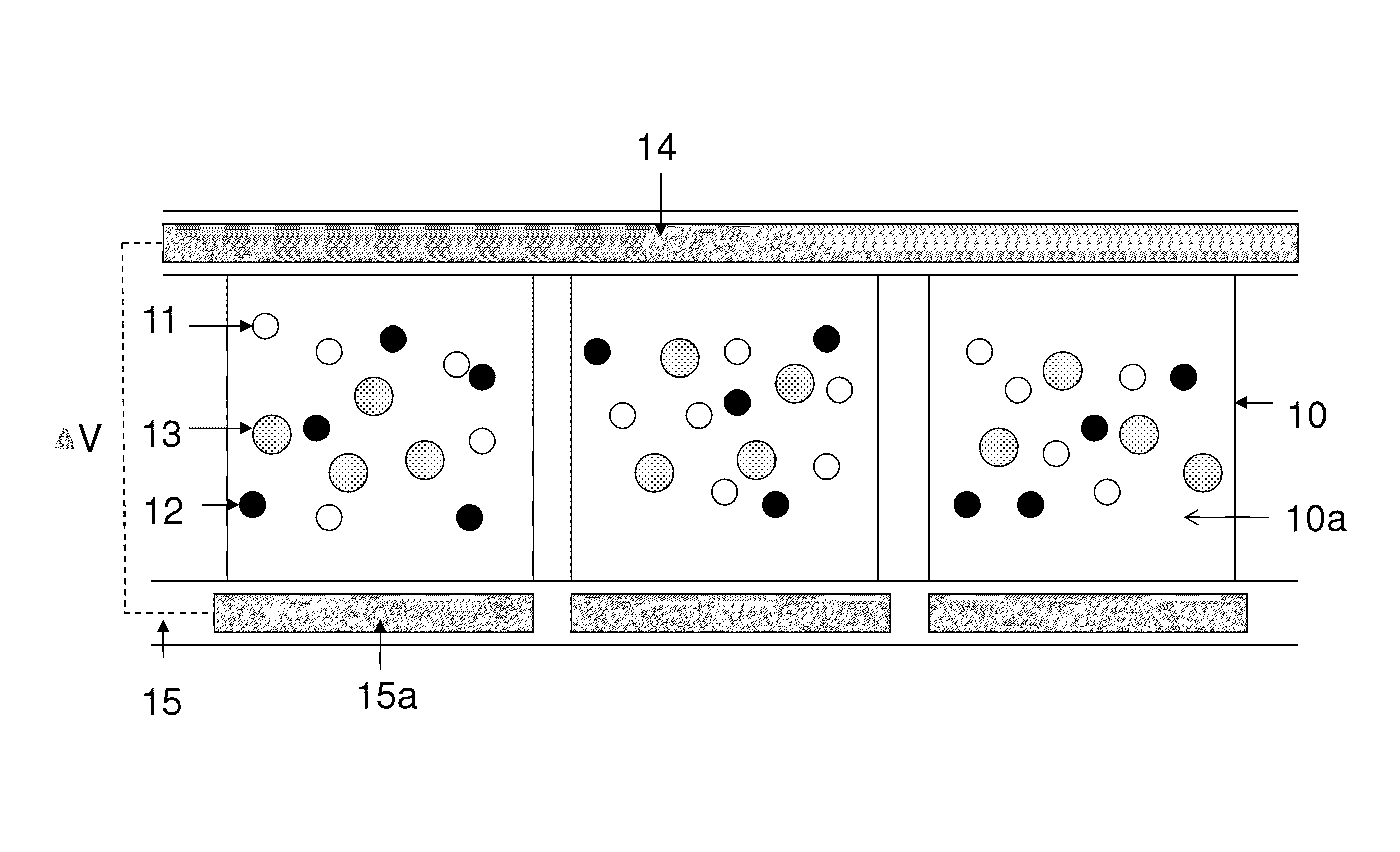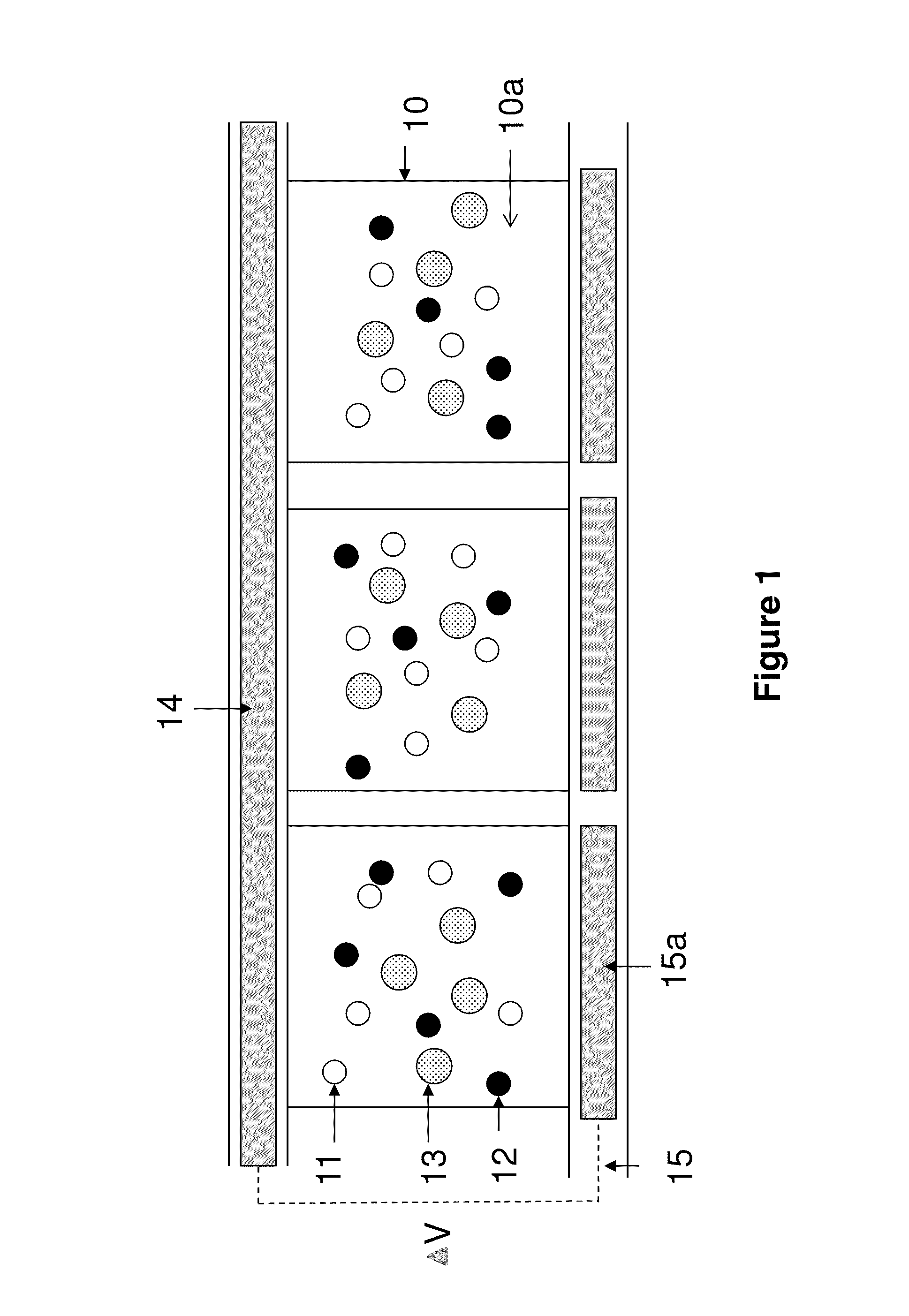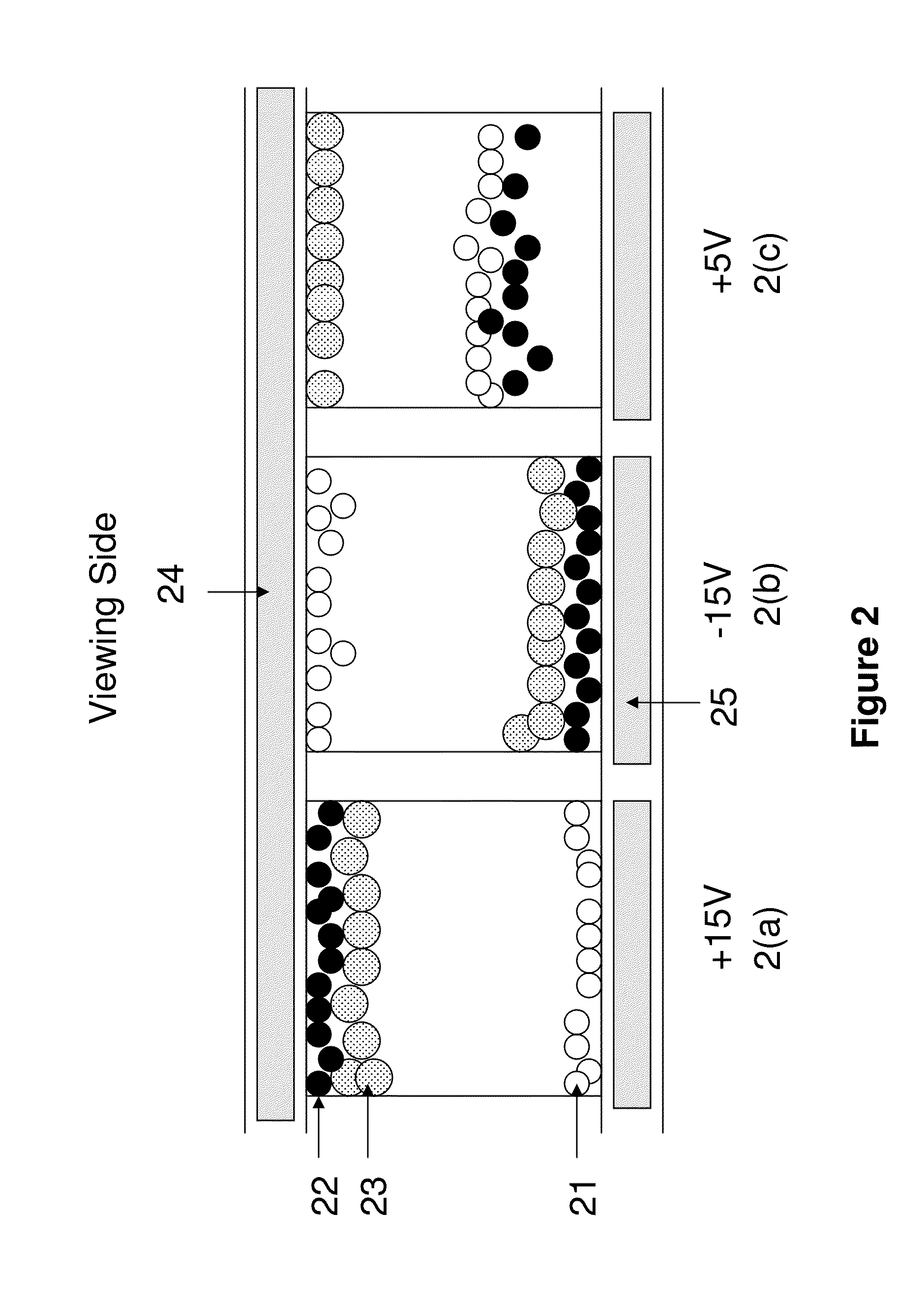Color display device
a display device and color technology, applied in the field of color display devices, can solve the problems of inability to choose a color display device, inability to adjust the color, and inability to meet the needs of color filters, so as to eliminate the need for color filters
- Summary
- Abstract
- Description
- Claims
- Application Information
AI Technical Summary
Benefits of technology
Problems solved by technology
Method used
Image
Examples
example 1 (
Example 1(c)
[0061]It is also possible to have the colored particles to have a threshold voltage, as shown in FIGS. 4(a)-4(c). In this case, the colored particles (43) would not move to the viewing side if an applied voltage potential difference is 5V or lower.
[0062]The black pigment particles (42) are negatively charged while the colored pigment particles (43) are positively charged, and both types of the pigment particles are smaller than the white particles (41).
[0063]The white particles (41) carry the same charge polarity as the colored particles which have the threshold voltage, but are slightly charged. The term “slightly charged” is as defined in Example 1(a) above. As a result, the colored particles move faster than the white particles (41), when an applied voltage potential is higher than the threshold voltage of the colored particles because of the stronger charge intensity they carry.
[0064]In FIG. 4a, the applied voltage potential is +15V. In this case, the black particles...
example 2
[0072]This example is shown in FIGS. 5(a)-5(c). It is assumed that the charge intensity of the black particles (52) is twice the charge intensity of the white particles (51) and therefore the black particles move twice as fast as the white particles. The colored particles (53) have a charge intensity which is less than 50% the charge intensity of the white particles.
[0073]Therefore if it takes a driving time, t, for the black particles to travel the distance between the common electrode and a pixel electrode (“d”), it would then take 2 t for the white particles and at least 4 t for the colored particles, to travel the same distance, d.
[0074]In addition, the black particles are positively charged and the white particles are negatively charged. The colored particles carry the same charge polarity as the particles having the highest intensity, that is, the black particles in this case.
[0075]In FIG. 5a, when a negative voltage potential is applied to the common electrode (54) and the pi...
PUM
| Property | Measurement | Unit |
|---|---|---|
| dielectric constant | aaaaa | aaaaa |
| dielectric constant | aaaaa | aaaaa |
| sizes | aaaaa | aaaaa |
Abstract
Description
Claims
Application Information
 Login to View More
Login to View More - R&D
- Intellectual Property
- Life Sciences
- Materials
- Tech Scout
- Unparalleled Data Quality
- Higher Quality Content
- 60% Fewer Hallucinations
Browse by: Latest US Patents, China's latest patents, Technical Efficacy Thesaurus, Application Domain, Technology Topic, Popular Technical Reports.
© 2025 PatSnap. All rights reserved.Legal|Privacy policy|Modern Slavery Act Transparency Statement|Sitemap|About US| Contact US: help@patsnap.com



